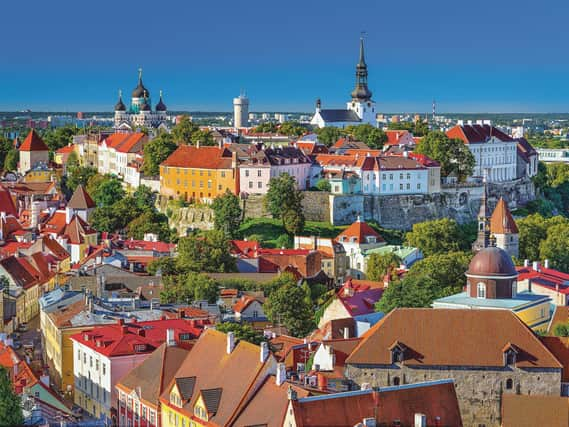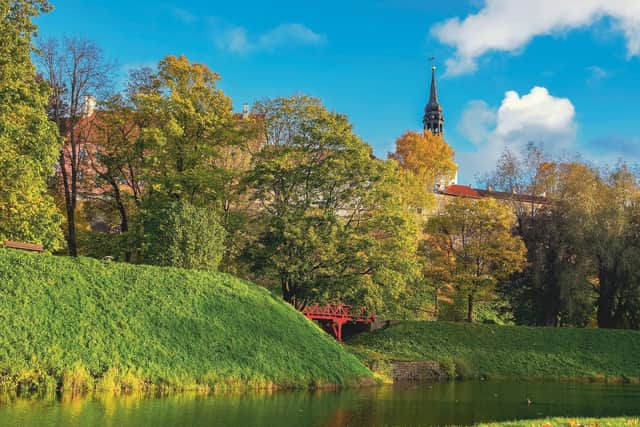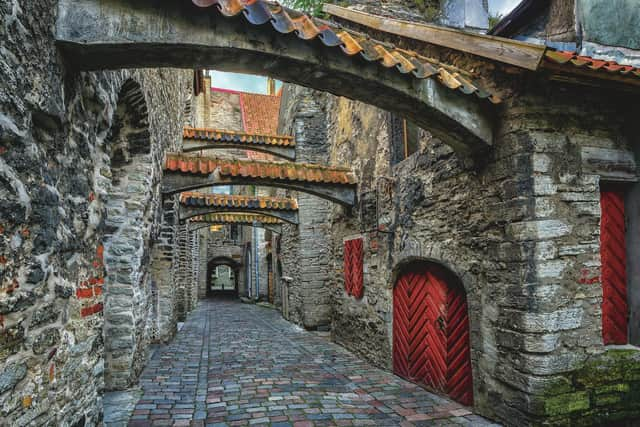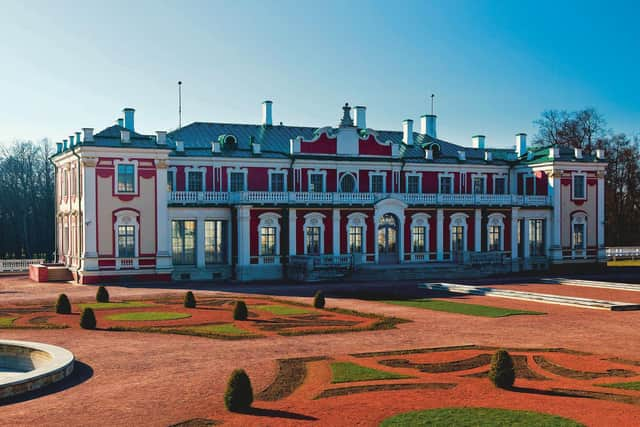Tallinn, Estonia: Scotland on Sunday Travel Wishlist


‘Estonia is one of just two countries in the world with a flag incorporating the colours blue, black, and white. The other is Botswana.”
Every day’s a school day.
“And as far as we know, that is the only similarity between the two countries,” adds our guide with a smirk.


Advertisement
Hide AdAdvertisement
Hide AdA steady rain falls on our small group standing outside Estonia’s parliament, but not even the grey afternoon can dull the vivid pink building on Toompea hill nor, apparently, our guide’s capacity for humour.
Like Edinburgh, Tallinn wears drizzly weather well. That said, I’m sure Estonia’s capital is fairly easy on the eye when bathed in sunshine too, and I hope we get a chance to experience that over the next few days.
Walking tours are a great way of getting one’s bearings in a new city, as well as being a hive of local knowledge.
The Russian Revival-style Alexander Nevsky Cathedral, consecrated in 1900, is a particular stand-out of our walk. Plans to demolish the church in the 1920s never came to fruition due to a lack of funds. Left to fall into disrepair, the cathedral has been painstakingly restored over the past 30 years.


We then climb up to a viewpoint overlooking Toompark and the rest of Tallinn. The distinctive orange-red roofs and numerous spires are eye-catching, and we’ve seen a lot in our rain-soaked walking tour of the city.
Katariina käik (St Catherine’s passage) is the oldest street in Tallinn. It’s easy to miss unless you’re keeping an eye out for it, but a short walk down the cobbled lane reveals several craft workshops – glassware, quilts, and ceramics to name a few – with open studios allowing passers-by to watch the artists at work.
We round off our first day with a visit to Telliskivi Creative City, a repurposed industrial area teeming with street art, designer shops, studios, and restaurants. We’ve already eaten so we head to Locomotive Restaurant Peatus for a beer or two; a bar-restaurant housed in two railway carriages in a former train maintenance depot.
It doesn’t rain the entire time we’re in the Estonian capital but there are plenty of indoor activities regardless. The Lennusadam (Seaplane Harbour) is worth a visit – one of the main attractions is the Second World War submarine Lembit – and the Pohjala Brewery and Taproom is just a ten-minute walk from the museum.


Advertisement
Hide AdAdvertisement
Hide AdSlightly further away is the Balti Jaama Turg, a market attached to Tallinn’s main station. It really is jam-packed full of stalls and shops of all kinds. It’s fascinating to wander round and a wide selection of food and drink is on offer for breakfast, lunch or dinner.
Later on we tempt the weather gods by taking a lengthy walk to visit Kadriorg Palace and its impressive grounds. Built in 1725 for Catherine I of Russia by Czar Peter the Great, the palace wouldn’t look out of place in a Wes Anderson film.It now houses an art museum, but the gardens are just as much of a draw, with elaborate fountains and flower patterns at the rear of the building.
Near the palace is a stadium. As a football journalist, my curiosity gets the better of me and I manage to get inside for a closer look. It’s the stadium where Scotland were due to play Estonia in a 1998 World Cup qualifier, except the hosts boycotted the game in a row over the floodlights. Scotland kicked off the game and three seconds later, the match was abandoned, prompting the “One Team in Tallinn” chant from the Tartan Army.
The ground looks a little different to what I remember from TV more than 20 years ago but it still feels slightly surreal to have stumbled across it by accident.
Glorious sunshine floods our room the following morning. A good thing, since we have two main excursions planned which both involve being at great heights with stunning views on offer.
Hotel Viru looks like a lot of high-rise hotels in Europe but during the Soviet era, the KGB used hidden rooms on the 23rd floor to spy on guests. As many as 60 rooms had hidden devices, and there were concealed microphones at some of the tables in the restaurant. The agents abandoned their post in a hurry just before Estonia’s independence was restored in 1991, but the extent of the espionage wasn’t uncovered until 1994 and has now been turned into the KGB Museum.
Aside from a glut of Soviet history and artefacts, the view over the city from the balcony is breathtaking.
Speaking of views, next on our list is the Tallinn TV Tower, around four miles from the city centre. It was built to provide better telecommunication access for the 1980 Moscow Summer Olympics regatta event held in Tallinn and bears a passing resemblance to the Berlin TV Tower. It is perhaps best known for an incident during the failed August Coup of 1991.
Advertisement
Hide AdAdvertisement
Hide AdOn 21 August, just hours after Estonia’s Supreme Council had declared full reinstatement of the country’s independence, pro-Soviet forces stormed the tower and cut off the television broadcast. A small group of radio operators forced the elevator out of service, effectively cutting off easy access to the summit, prevented entry to the signal rooms and maintained radio broadcasting in the country. By evening, news of the coup’s failure reached the paratroopers and they withdrew.
There are still bullet holes from the 1991 incident visible at the base of the tower, a lasting memory of Estonia’s recent history, and on a clear day you can see for miles in all directions from the observation deck.
We felt at home from the moment we arrived in Tallinn and the generosity and kindness of the locals added to our enjoyment of the trip. With Helsinki just a ferry-ride away and St Petersburg reachable by train, it’s possible to spend time in Tallinn as part of a lengthier trip as well. Our trip left us eager to explore more of Estonia but I wouldn’t bet against us returning to Tallinn in the near-future too.
FACTFILE
See Visit Tallinn https://visittallinn.ee/eng and Visit Estonia https://www.visitestonia.com/en/where-to-go/tallinn for further information. And Telliskivi Creative City website has events, indie shops and food and drink suggestions. https://telliskivi.cc/en/
Patrick McPartlin
xxxxxxxxxxxxxxxxxxxx
A message from the Editor:
Thank you for reading this story on our website. While I have your attention, I also have an important request to make of you.
With the coronavirus lockdown having a major impact on many of our advertisers - and consequently the revenue we receive - we are more reliant than ever on you taking out a digital subscription.
Subscribe to scotsman.com and enjoy unlimited access to Scottish news and information online and on our app. With a digital subscription, you can read more than 5 articles, see fewer ads, enjoy faster load times, and get access to exclusive newsletters and content. Visit https://www.scotsman.com/subscriptions now to sign up.
Our journalism costs money and we rely on advertising, print and digital revenues to help to support them. By supporting us, we are able to support you in providing trusted, fact-checked content for this website.
Joy Yates
Editorial Director
Comments
Want to join the conversation? Please or to comment on this article.